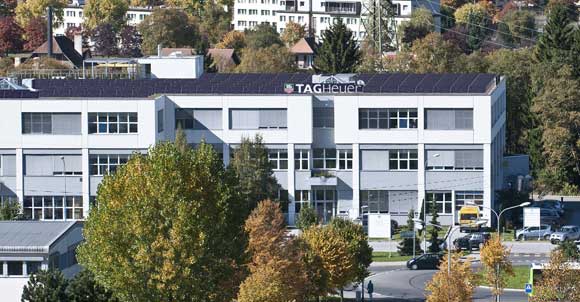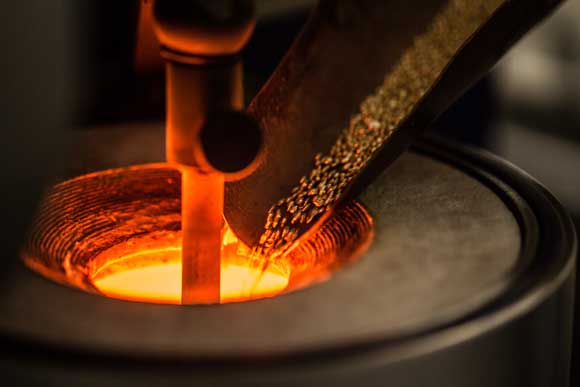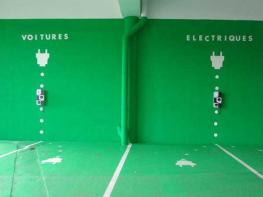Watchmaking is inherently sustainable in that it produces exclusively durable products: such is the convenient explanation the industry has long relied upon to avoid debate on a field where it is significantly lagging behind. Unfortunately, the fact is that watchmaking emits pollutants, lays off staff and has its fair share of inequalities – no more and no less than any other industry.
Nonetheless, Social and Environmental Responsibility (SER) has managed to establish itself – first of all within the more distant brand-related environment, among consumers (waste sorting, domestic energy consumption reduction, hybrid cars), subsequently among industrialists (FSC wood, fair trading labels) and more recently among politicians who are now holding summits and multi-party debates at a frantic pace. Slowly but surely, the watch industry has been hopping on the bandwagon…
Tentative first steps
The initial tokens of ‘progress’ were not particularly encouraging, as the industry did what it does best: storytelling. One company began making its own honey, while another equipped its car park with three electric charging stations – but without the corresponding vehicles on the other hand. The illusion was not even remotely convincing and the SER report became a “green absolution” exercise in which the big groups displayed impressive skills. Unfortunately, facts and deeds are all that matter in this domain and it was a very long time before tangible signs of SER awareness began to emerge, many of them the aftermath of the 2008 crisis.
Since then, we are pleased to report that things are indeed moving ahead, albeit at a fairly sedate speed. The latest example has been set by the new eco-friendly manufacturing site of A. Lange & Söhne inaugurated on September 5th of this year. The building reflects both sustainable architecture and innovative energy management. Its geothermal energy plant, the largest in Saxony, maintains a stable temperature year-round, and the building is an entirely CO2-free facility.
Future-ready buildings
Without going quite that far, recent constructions or renovations in the industry generally strive to earn the Minergie environment-friendly level, as seen at Fleurier Ebauches or Jaeger-LeCoultre – whose latest 9,000 sq.m. extension (the largest in its history) has earned that particular certification. Over the past 20 years, improvements to its heating system have enabled it to maintain stable fuel consumption despite a 40% increase in the surface area of its production facility. Similar endeavours are being made by Swatch Group, which cut its fossil fuel consumption by 6.7%, despite a substantial rise in production – although production of special waste excluding batteries skyrocketed by +27.6%.
Meanwhile, a number of companies have adopted measures such as installing photovoltaic panels on older constructions, including Audemars Piguet in Le Brassus, and TAG Heuer which now features 750 square meters of solar panels on its La Chaux-de-Fonds site.

Coveted labels
Another area being developed is that of certifications. Minergie is a purely architectural one, as is the SIA 380/1 standard (issued by the Swiss Society of Engineers and Architects) on which the new Hublot building is based, even exceeding its demands by 20% in terms of efficiency.
Another recognised label in this field is that of the Responsible Jewellery Council (RJC), a not-for-profit organisation that aims to involve all stakeholders in the jewellery supply chain from mine to retail in establishing a code of practice governing the profession. Cartier has for example been one of the 14 founder members since 2005, and yet it did not itself earn certification until 2010. That gives an idea of the slow progress being made by the cause, even though the vast majority of firms have since adopted it.
The future of sustainable watchmaking is probably best represented by Fairmined certification, guaranteeing the ethical nature of gold and its full traceability. Chopard blazed this particular trail with watch and jewellery collections representing a daring wager, given that this gold is definitely more expensive in that it must be processed via an entirely independent circuit within the Manufacture.
Despite these higher costs, Chopard introduced a first series of 25 Fairmined watches in 2014. It was so successful that the subsequent series introduced in 2015 was ten times larger (250 watches). Marc Hayek has stated that the Swatch Group is also ready to consider this option and Harry Winston might examine the possibility.

What about the human factor?
However one looks at SER, the letter S in ‘Social and Environmental Responsibility’ really means human beings.
General equality of job opportunities has never been the real issue in the watch industry, given the many jobs historically held by women. Access to decision-making positions is however more problematic, as confirmed the extremely limited numbers of women sitting on company Boards – with the only well-known examples being Nayla Hayek and Jasmine Audemars, who is now 74. Among the independent brands, DeLaneau has Jessica Walther as its CEO, but there are really very few women at the helm of such firms.
Independents display impressive ingenuity
The independent brands naturally do not have the means available to the big groups and thus rely on their ingenuity, as exemplified at Christophe Claret: “We have an ingenious system for our production building and our machines, which are cooled down by the typically cold nights of our region. It operates using water only, and we also took an innovative and risky choice ten years ago: to acquire a high-precision laser-cutting machine that saves 68 hours per day on the energy consumption of our machines, since it can do in just four hours what others take 72 hours to accomplish.”
Nonetheless, one cannot help observing that sustainable development is still not a priority for most of them. “The basic goal is to survive”, admits one of them with a sigh. While that is understandable enough, if consumers do make it their priority, they will be forced to keep pace.










